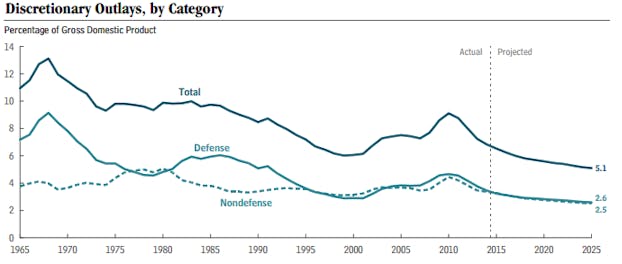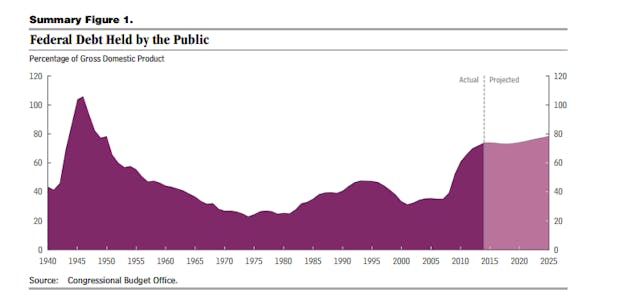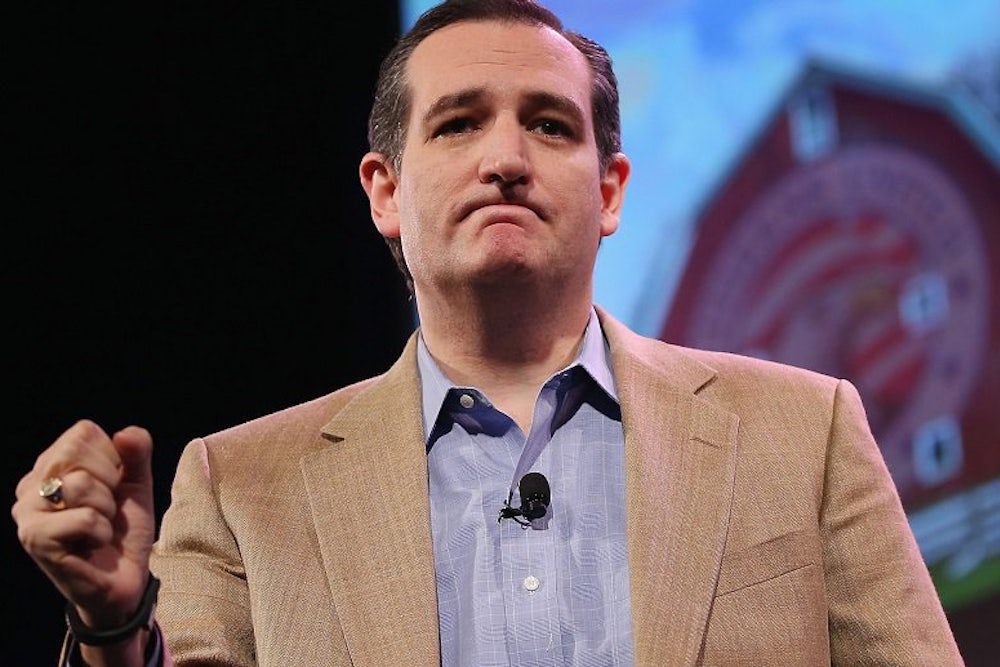On Monday, the Congressional Budget Office released its newest update for its budget and economic projections. Journalists and policymakers immediately honed in on the deficit as the most important part of the report. But there’s a much more important, worrisome figure that will get far less coverage: discretionary spending.
That may sound boring but it’s incredibly important. As CBO notes, discretionary spending “includes a broad array of items and activities, including defense, law enforcement, transportation, the national park system, disaster relief, and foreign aid.” It doesn’t include Medicaid, Medicare or Social Security—three programs that are primarily responsible for rising deficits over the next few decades. In other words, discretionary spending has nothing to do with our long-term debt problems.
Yet, Congress has decided to take an axe to it. CBO projects discretionary spending to fall from 6.8 percent of GDP in 2014 to 5.1 percent of GDP in 2025, mostly the result of sequestration. That will be far lower than at any point before 1965. These two charts tell the story:


You often hear politicians, generally on the right, proclaim that the greatest threat to the future of America is the federal debt. That was on frequent display Saturday at the Iowa Freedom Summit hosted by Representative Steve King. Ben Carson, the potential presidential candidate, called the debt a “monster,” for instance. Many other Republicans made similar remarks. Over the coming days, you’ll probably hear some of those Republicans point to the new CBO report as vindication for those sentiments, and this graph of the U.S.’s debt projections in particular.

That’s not great. But federal debt is supposed to be lower in 2019 than it was in 2014. After that, it rises, and past 2025 it is projected to rise even faster (though that isn’t in this report). At least for the near-term, though, we aren’t facing a debt apocalypse. The real threat right now, as much as there is one, isn’t the deficit. It’s the decline in discretionary spending, particularly non-defense discretionary spending. We aren’t making the needed investments to keep our country strong, and that is only projected to get worse over the next decade.
